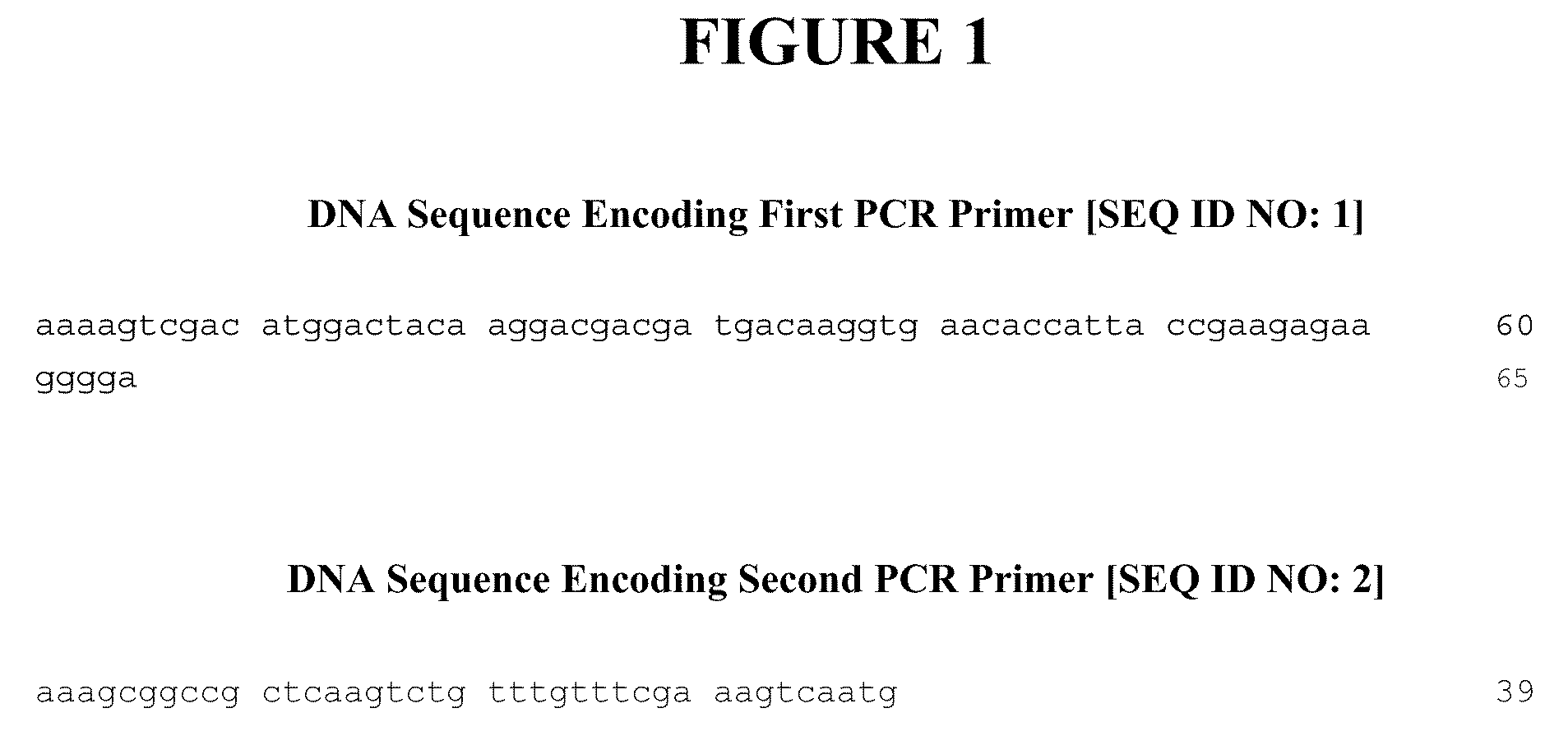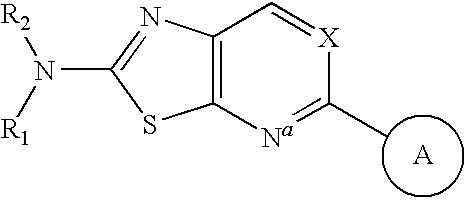Apoptosis signal-regulating kinase 1 inhibitors
a signal-regulating kinase and inhibitor technology, applied in the direction of drug compositions, immunological disorders, metabolism disorders, etc., can solve problems such as affecting insulin signaling
- Summary
- Abstract
- Description
- Claims
- Application Information
AI Technical Summary
Benefits of technology
Problems solved by technology
Method used
Image
Examples
example 1
Preparation of intermediates N-(5-bromothiazolo[5,4-b]pyridin-2-yl)-4-(2-hydroxypropan-2-yl)benzamide (1D) and N-(5-bromothiazolo[5,4-b]pyridin-2-yl)-4-(trifluoromethyl)benzamide (1E)
[0526]
[0527]Step A: Commercially available 6-bromopyridin-3-amine (1A, 20 g, 1.0 equivalent) was added in portions to a solution of potassium thiocyanate (5.0 equivalents) in acetic acid (0.4 M) at −5° C. After addition, the mixture was cooled to −15° C., and a solution of Br2 (1.3 equivalent) in acetic acic (9.4 M) was added drop wise via an additional funnel. The mixture was then warmed to room temperature and stirred for 12 h. The resulting precipitate was filtered; 100 mL EtOAc and 200 mL H2O were added to the filtrate and then 200 mL of solvent was removed in vacuo. The residue was stirred in ice bath for 10 minutes, and then the resulting precipitate was collected by filtration and washed twice with cold 10% MeOH in Et2O. The filtrate was concentrated and the product was crystallized in ice bath ...
example 2
Preparation of intermediate N-(5-bromothiazolo[5,4-b]pyridin-2-yl)-4-(1-hydroxy-2-methylpropan-2-yl)benzamide (2F)
[0531]
[0532]Step A: Anhydrous cesium carbonate (7.8 g, 1.2 equivalents) was suspended in dixoane (0.25 M). Ethyl 4-bromobenzoate 2A (1.0 equivalent), isobutyraldehyde (2.0 equivalents), Pd(OAc)2 (0.05 equivalent) and tri-tert-butylphosphine (0.1 equivalent) were added. The resulting mixture was heated to 110° C. for 2 h. After cooling, water was added and the mixture was extracted with ethyl acetate. Combined organic layers were dried over MgSO4, filtered and concentrated. The crude product was purified by chromatography (SiO2) to give 2B (15%) as a colorless oil: 1H NMR (400 MHz, CHLOROFORM-d) δ ppm 1.32-1.44 (m, 9H) 2.04 (s, 1H) 3.65 (d, J=6.2 Hz, 2H) 4.37 (q, J=7.2 Hz, 2H), 7.41-7.52 (m, 2H), 7.96-8.06 (m, 2H).
[0533]Step B: To a solution of ethyl 4-(1,1-dimethyl-2-oxoethyl)benzoate (2B, 680 mg, 1.0 equivalent) and 2,6-lutidine (2.0 equivalents) in CH2Cl2 (0.03 M) was ...
example 3
Preparation of intermediates 4-acetyl-N-(5-bromothiazolo[5,4-b]pyridin-2-yl)benzamide (3C) and N-(5-bromothiazolo[5,4-b]pyridin-2-yl)-4-(1,1,1-trifluoro-2-hydroxypropan-2-yl)benzamide (3D)
[0537]
[0538]Step A: 4-acetylbenzoic acid 3A (500 mg, 1.0 equivalent) was dissolved in DCM (0.3 M), and then followed by addition of oxalyl chloride (1.2 equivalent) and DMF (0.3 equivalent). The mixture was stirred at room temperature for 1 h. Volatiles were removed in vacuo. The residue 3B was obtained as a white solid and was used without further purification. 3B: ESI-MS: m / z 183.0 (M+H)−.
[0539]Step B: 4-acetylbenzoyl chloride (3B, 560 mg, 1.0 equivalent) was dissolved in DMA (0.15 M). Methyl 4-(chlorocarbonyl)benzoate (2.0 equivalent) was then added. The mixture was heated to 50° C. for 12 h, followed by addition of water and extraction with EtOAc twice. The combined organic layers were dried over Na2SO4, filtered and concentrated in vacuo. The crude product was purified by chromatography (SiO2...
PUM
| Property | Measurement | Unit |
|---|---|---|
| Volume | aaaaa | aaaaa |
| Mass | aaaaa | aaaaa |
| Mass | aaaaa | aaaaa |
Abstract
Description
Claims
Application Information
 Login to View More
Login to View More - R&D
- Intellectual Property
- Life Sciences
- Materials
- Tech Scout
- Unparalleled Data Quality
- Higher Quality Content
- 60% Fewer Hallucinations
Browse by: Latest US Patents, China's latest patents, Technical Efficacy Thesaurus, Application Domain, Technology Topic, Popular Technical Reports.
© 2025 PatSnap. All rights reserved.Legal|Privacy policy|Modern Slavery Act Transparency Statement|Sitemap|About US| Contact US: help@patsnap.com



